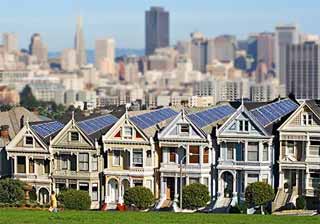- September 10, 2015
- 0 Comments
- In Miscellaneous
- By
As a native Californian, I often marvel at my home state’s progressive attitude towards environmental conservation. In 1988, we were the first state to adopt air quality standards, which the federal Clean Air Act would later be amended to resemble. More recently, landmark legislation such as A.B. 32, or California’s Global Warming Solutions Act of 2006, set the first statewide requirements for GHG emissions reductions in the country. Today, cities like San Francisco have plastic bag bans and zero-waste initiatives. However, our culture is one of sustainability partly out of necessity—in January 2014, Governor Brown declared California’s severe and sustained drought situation a state of emergency. Despite our already resource-constrained present, California’s population is anticipated to increase by 14% over the next fifteen years to 44 million people. The good news is, we’ve made some big strides recently in planning for the future demands of an ever-growing population.
Under A.B. 32, it is estimated that about 15% of California’s 2020 GHG emissions reductions goals can be met through new and existing building energy efficiency. Earlier this summer, the California Energy Commission adopted 2016 Building Energy Efficiency Standards to require all newly-constructed residential buildings to be net-zero energy by 2020, and all new non-residential construction by 2030. A net-zero energy building is one that uses as much energy over the course of the year as it generates from onsite renewables. In California’s case, net-zero energy will be achieved primarily through the strengthening of code requirements for building envelope efficiency in combination with the use of solar photovoltaics (PV). The standards will use a metric called Time Dependent Valuation (TDV) to compare proposed designs with their energy budget when assessing an approach to compliance. The TDV metric accounts for the fluctuating cost of gas and electricity over time of day, season and climate zone; California seeks to consider all of these variables in order to ensure that the standards are cost-effective and achievable. The estimated energy impact of the 2016 net-zero energy goals is the avoided need for twelve new 500 MW power plants over the 30-year life of the standards. Net-zero energy will greatly improve California’s grid resiliency by lowering coincident statewide peak electricity demand. There are benefits for individuals as well: the California Energy Commission estimates that a “typical” residential unit will experience $31 in savings per month.
Historically, California’s markets have responded well to environmental mandates. To date, the Zero Emission Vehicle (ZEV) Program has put over 146,000 electric vehicles on California’s highways as the cost of manufacturing plug-in electric cars continues to fall. In New York, unprecedented energy and environmental regulation is also currently taking shape. Known as Reforming the Energy Vision, or REV, the NYS Department of Public Service aims to improve the sustainability and affordability of New York’s energy system by adopting policies that promote private investment in technological innovation and distributed energy resources. I hope that we can expect to see similar innovation from New York’s markets as a result of such forward-thinking legislation.

